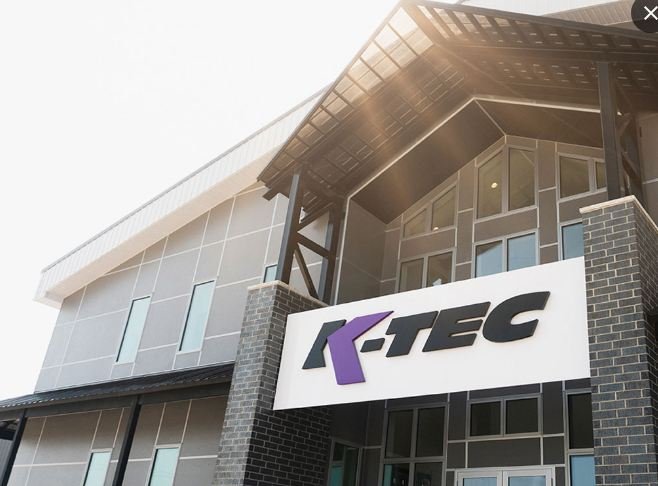Introduction to Ktec 80bh 3v
Are you experiencing issues with your Ktec 80bh 3v? If so, you’re not alone. This versatile piece of equipment is a favorite among many for its reliability and performance. However, like any machinery, it may require occasional replacements to maintain optimal functionality. Whether it’s wear and tear or specific components malfunctioning, knowing how to properly replace parts can save you time and money in the long run.
In this guide, we will walk you through everything you need to know about the Ktec 80bh 3v replacement process. From understanding why a replacement might be necessary to tips on maintaining your new part, we’ve got all bases covered. So let’s dive in!
Reasons for a Replacement
The Ktec 80bh 3v is designed for durability, but wear and tear can take their toll. Over time, components may degrade, leading to diminished performance.
One common reason for replacement is a drop in efficiency. If your equipment isn’t operating at its best, it might be due to outdated or damaged parts.
Another factor could be safety concerns. Faulty machinery can pose risks that you can’t ignore. Prioritizing safety means replacing any faulty components promptly.
Additionally, changes in technology often render older models obsolete. Upgrading your Ktec 80bh 3v ensures compatibility with modern systems and enhances overall functionality.
Regular maintenance issues can become too frequent or costly over time. Sometimes investing in a new unit proves more economical than ongoing repairs.
Steps to Properly Replace a Ktec 80bh 3v
Replacing your Ktec 80bh 3v can be straightforward if you follow the right steps. Start by gathering all necessary tools, including a wrench set and screwdrivers.
Next, ensure that the power supply is disconnected to avoid any accidents during replacement. This step is crucial for your safety.
Once you’re ready, locate the screws or bolts securing the unit in place. Carefully remove them and keep track of where each belongs.
Gently lift out the old Ktec 80bh 3v, taking care not to damage any surrounding components or wiring.
Now it’s time to install your new replacement. Position it correctly and secure it with screws or bolts you’ve previously removed.
Before reconnecting power, double-check all connections are tight and everything looks good visually. Only then should you restore power to test functionality properly.
Tips for Maintaining the New Replacement
After installing your Ktec 80bh 3v replacement, proper maintenance is crucial for longevity.
Start by regularly checking the fluid levels. Keeping everything topped off ensures smooth operation and prevents unnecessary strain on the system.
Cleaning is equally important. Dust and debris can cause wear over time. A simple wipe-down with a soft cloth can make a significant difference.
Monitor performance frequently. If you notice any changes in efficiency or unusual sounds, address them promptly to avoid bigger issues down the line.
Keep an eye on connections and fittings. Tighten any loose components to maintain optimal functionality.
These small steps will go a long way in extending the life of your new Ktec 80bh 3v replacement while ensuring it runs at peak performance.
Common Issues and Troubleshooting for Ktec 80bh 3v
Common issues with the Ktec 80bh 3v often arise during operation. One frequent problem is overheating. If you notice excessive heat, check for blockages in airflow or a malfunctioning fan.
Another issue could be irregular performance. This might stem from outdated firmware or worn-out components. Regular updates and timely replacements can mitigate this.
Noise during operation can also signal trouble. Unusual sounds may indicate loose parts or failing bearings. A quick inspection can help identify these concerns before they escalate.
Connectivity problems are not uncommon. Ensure all connections are secure and that cables aren’t frayed or damaged to maintain optimal functionality.
Addressing these common challenges promptly will prolong the life of your Ktec 80bh 3v and enhance its efficiency over time. Keep an eye out for symptoms to ensure smooth operations.
Benefits of Replacing with the Ktec 80bh 3v
Choosing the Ktec 80bh 3v as a replacement brings several advantages. One of the most notable benefits is its enhanced efficiency. This model is designed to optimize performance, ensuring that your equipment runs smoothly and effectively.
Another significant advantage is durability. The Ktec 80bh 3v is built with high-quality materials, which means it can withstand demanding conditions better than many alternatives on the market.
Additionally, this replacement offers compatibility with various systems. You won’t have to worry about extensive modifications or adjustments during installation.
Cost-effectiveness also plays a role in its appeal. With lower maintenance costs due to its robust design, you save money over time.
Customer support from Ktec provides peace of mind for users. They offer assistance throughout the lifecycle of your product, making troubleshooting simpler when needed.
Conclusion
When it comes to maintaining the performance and efficiency of your equipment, understanding how to handle a Ktec 80bh 3v replacement is crucial. This process not only ensures optimal operation but also extends the lifespan of your machinery. By being proactive with replacements, you can avoid unexpected downtimes and costly repairs in the future.
Taking care of your new Ktec 80bh 3v involves regular checks and maintenance routines that can significantly improve reliability. Being aware of common issues will also prepare you for any troubleshooting needs that arise down the line.
Choosing to replace with a Ktec 80bh 3v offers numerous advantages—improved functionality, better energy efficiency, and enhanced overall performance are just a few benefits worth considering.
Investing time in this replacement process pays off immensely when you see how smoothly operations run afterward. Embrace these steps confidently for an effective transition!


